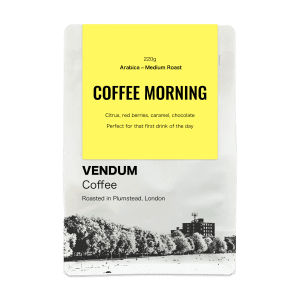Your basket is currently empty!
Congratulations! You’ve got your hands on a shiny new bean-to-cup coffee machine, and you’re ready to up your coffee game. Whether you’re switching from instant coffee or upgrading from a pod machine, this guide will help you get started without the faff.
Unpacking and Setup
First things first, unpack everything and give your machine a good once-over. Most machines come with a quick-start guide, but let’s be honest—those can be as dry as week-old bread. So here’s the real deal:
- Cleaning Before First Use: Before you brew anything, clean the machine. Rinse the water tank, run some water through the machine, and wipe down any removable parts. It’s not glamorous, but it’ll get rid of any dust or residue from manufacturing.
- Water Tank Filling: Use fresh, cold water—ideally filtered if you live in a hard-water area. Fill the tank up to the max line but don’t overdo it. You don’t want water sloshing everywhere when you move it back into place.
- Setting the Grind Level: Your machine will likely have a dial for grind size. Start with a medium grind setting. Too fine, and you’ll end up with a bitter, over-extracted brew; too coarse, and your coffee will be weak and watery. You can tweak this later once you’ve had a few cups and figured out what works for you.
Where to Source Beans From
The beans you use are just as important as the machine itself. A bean-to-cup machine is only as good as what you put in it, so don’t skimp on quality. Here are a few places to source fresh, tasty beans:
- Farmers’ Markets: Great for finding local roasters who care about quality and freshness.
- Specialty Coffee Shops: Many independent coffee shops sell their own beans, often freshly roasted.
- Local Suppliers: Support local businesses, and you might find a hidden gem.
- Vendum Coffee: Of course, we’d be remiss if we didn’t mention our own range of freshly roasted beans. We roast on-demand and ship the same day, so you get beans at their peak.
Whatever source you choose, look for a roast date on the bag. Fresher is better—aim to use beans within four weeks of roasting.
Prepping the Machine
Once your machine is cleaned and loaded with water and beans, don’t rush into brewing just yet. Give the machine a few minutes to heat up properly. Running hot water through the system before brewing can help bring everything up to the right temperature and ensures your first cup isn’t lukewarm.
Choose Your Starting Point
Now it’s time to think about the kind of coffee you want. If you’re new to the world of coffee machines, don’t overwhelm yourself by diving into the deep end with light roasts and fruity profiles.
Start simple:
- Medium Roast: These tend to have a balanced flavour, often with chocolatey or nutty notes. It’s a safe, delicious choice to break in your machine.
- Avoid Overcomplicating: Skip the overly complex blends or single origins with tasting notes like “tangerine and hibiscus”—at least for now. You’re getting to know your machine, and you want something straightforward.
Once you’ve mastered the basics, you can branch out into lighter roasts with fruity or floral notes, or darker roasts if you like a bolder, more intense flavour.
Experiment with Settings
Your machine will have various settings—grind size, strength, temperature, and maybe even milk frothing options. Don’t be afraid to mess around with them. Here’s how to approach it:
- Grind Size: If your coffee tastes too bitter, try a coarser grind. If it’s too weak, go finer.
- Strength Setting: Most machines have a button for this. Start in the middle and adjust to taste.
- Temperature: Some machines let you control how hot the water gets. Generally, hotter water extracts more flavour but can also bring out bitterness if you’re not careful.
Cleaning and Maintenance
Like any good piece of kit, your bean-to-cup machine needs regular TLC to keep performing at its best. Here’s a no-nonsense maintenance routine:
- Daily: Empty the drip tray and used coffee grounds container. Give the water tank a quick rinse and refill.
- Weekly: Wipe down the exterior and removable parts. Run a cleaning cycle if your machine has one.
- Monthly: Descale the machine, especially if you live in an area with hard water. Check the manual for recommended descaling solutions.
Neglecting maintenance can lead to blockages and subpar coffee, so don’t skip it.
The Bottom Line
At the end of the day, coffee is about enjoyment. Don’t get too caught up in what you’re “supposed” to like. Everyone’s taste is different, and what matters most is that you enjoy what you’re drinking.
Start simple, keep things clean, and don’t be afraid to experiment. Maybe you’ll find that you prefer a bold, dark roast in the morning and a light, fruity one in the afternoon. Maybe you’ll stick with medium roasts forever—that’s fine too.
Whatever you do, don’t let anyone tell you what you should like. Coffee is personal. Go with what makes you happy.
Featured products
-
VENDUM Coffee, Coffee Morning, whole speciality coffee beans, roasted to order in Plumstead, London
£8.50 – £26.50 -
VENDUM Coffee, India Gargekhan Estate Natural coffee beans, roasted to order in Plumstead, London
£10.72 – £33.50 -
VENDUM Common espresso whole coffee beans, roasted to order in Plumstead, London
£10.00 – £30.00






